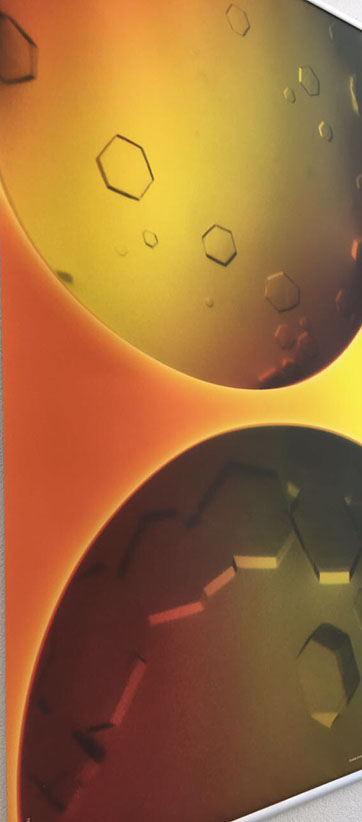Is it sometimes ok to retouch scientific images?
We’re all familiar with the controversy that the use of photoshop to alter images of womens’ bodies in the media can cause. Whether the purpose is to smooth a wrinkle or tuck in a tummy, many people intuitively feel ‘improving’ an image is wrong and public debate about the issue is rife.
I came across my own version of this controversy while trying to make a large banner for the foyer in EMBL’s site in Grenoble that would show crystallised proteins. The banners are 100 cm wide and 200 cm high. To make sure print quality is good, I needed an image in this size with at least 96 dpi. AND: we would like to show crystals produced in one of our labs. I asked our scientists in Grenoble about a nice image with the highest resolution they can produce with an electron or light microscope. And this is where my story starts.
We all know that words often have different meanings in different contexts. So it is with the word resolution: optical resolution means something different than image resolution. Scientists tend not to think about the resolution of the images they have but more about the smallest detail they can observe with the instrument they are using, and so the resolution of the images and videos produced can be quite low.
The highest resolution image I received from the labs had by far not enough dpi to be reproduced in the banner size. So what to do? Our first approach was to interpolate the crystal image. This cost quite a bit to produce, but the quality was good. However, this isn’t something that we could justify doing every time we need a great image.
So I did some research to see how we have solved this problem in the past. And I found this banner in our facility in Hamburg!

On closer inspection, we see that the crystals are created manually with photoshop filters!
So the historic approach to such images was more an art concept than the reproduction of original images of crytals from our labs. This leads directly to the common question in Art and Design: what approach is right and wrong, which design is better or worse, how much can you compose, change and re-arrange in order to still be scientifically correct?
Be led by the purpose of the image
I decided to evaluate what approach is appropriate for the art work – faithful adherence to the image versus the use of creative tools – by agreeing first on its purpose:
- If there is a need to give visual proof of a research result, or to open it up for interpretation and analysis, then we must use the original image as provided by the scientific instrumentation – unaltered.
- If the work is intended to illustrate a concept or to inspire, then we can be more creative. It’s ok to retouch these images, or even create them from scratch.
In the end, we came up with a concept for several banners in the whole foyer in Grenoble: a photograph of the new cryo-EM, a 3D-rendering of a protein structure (they are mostly vector-based and thus easy to scale big), and one “art concept” and composing of protein crystals based on the original crystal image from our lab.
I am curious to see what visualisation and image challenges I will face in the future. New technologies will further explore and improve reproduction and I – for sure – shall follow up the ethics behind the production and reproduction of scientific images.
I’d love to hear your thoughts.